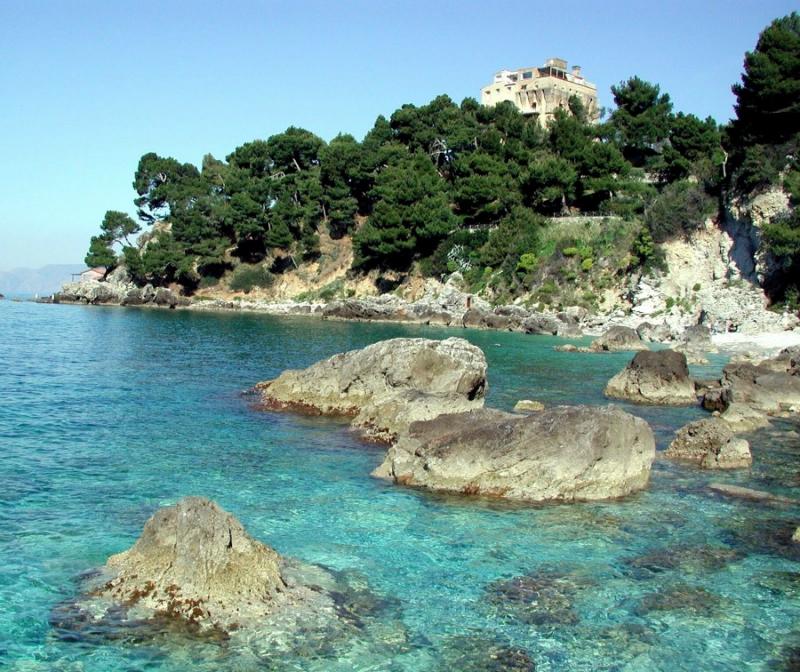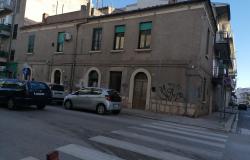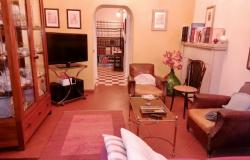The chief town of Basilicata’s coast is Maratea, a beautiful unspoilt medieval centre that you can visit in an atmosphere of friendliness as locals beckon you in to sample their drinks, cheeses, sausages, biscuits, or breads.
It is well-equipped to offer visitors an attractive and unspoilt base for exploring the coastline or to make the occasional excursion into the hot interior of Basilicata – possibly to see the ancient Roman site at Grumento or the beautiful Parco Nazionale del Pollino.
Unexpected Surprises
 It is not hard to fall into step with the unhurried way of life that most locals seem to enjoy, especially as the summer temperatures start to climb. From Piazza Buraglia at the foot of the town centre walk up Via Cavour to Piazzale Santa Maria Maggiore, named after the principal church in town, a building started in the13th century and developed continuously afterwards.
It is not hard to fall into step with the unhurried way of life that most locals seem to enjoy, especially as the summer temperatures start to climb. From Piazza Buraglia at the foot of the town centre walk up Via Cavour to Piazzale Santa Maria Maggiore, named after the principal church in town, a building started in the13th century and developed continuously afterwards.
From here narrow streets, alleyways and steps climb up into the heart of the compact old town where you can wander and sample the unexpected surprises. Peeling paintwork to delight the artist, shrines hewn out of the cliff face to halt the pious, cheeses drying in the warm air to cheer the foodie, a sad magpie in a brass cage on a balcony to anger the birdlover.
The local tourist office in Piazza del Gesù can give you details of the town and its historic churches and buildings. Perched above the upper town is La Locanda delle Donne Monache, a former convent with an attractively decorated interior and an excellent restaurant. Its garden, fringed with bougainvillaea and lemon trees, has a swimming pool, a rarity in the old town centre and a peaceful place for guests to cool off.
Apart from hosting a range of gourmet evenings and cookery classes, it is always a reliable place to enjoy the excellent local cuisine, especially the seafood and a carefully selected list of Italian wines.
Sanctuaries and Statues
 In the city of the 44 churches it is worth visiting at least one or two of their number even if it is just to savour the architecture, such as the Basilica San Biagio. Built over a pagan temple, it dates back as far as the 6th and 7th centuries.
In the city of the 44 churches it is worth visiting at least one or two of their number even if it is just to savour the architecture, such as the Basilica San Biagio. Built over a pagan temple, it dates back as far as the 6th and 7th centuries.
Its brilliant white Carrara marble facing contrasts sharply with the usual solid blue sky above and bears a strong resemblance to the great statue of Corcovado, Rio’s popular landmark. The base of the statue commands stunning views north to the Campania coast and south to Calabria especially at the end of the day when the entire coastline is frequently bathed in glorious light.
In the clear waters below, major Roman artefacts have been recovered including a processing plant once used to make garum, a fish sauce that was a vital part of Roman cuisine. Every May a colourful procession follows the silver effigy of San Biagio hooded in red cloth as it is carried from the mountain sanctuary down the winding road to the village, where the mayor uncovers it to mark the beginning of a week of celebrations in the saint’s honour. To the outrage of the community, the original 18th-century embossed silver effigy was stolen in 1976.
Along the Coast
 However, it is the coast itself that is the main attraction of staying in Maratea. Rocky slopes and outcrops are liberally covered with pines, olives, oaks and carobs, interspersed with wild rosemary, myrtle and broom, and drop away steeply into the clear waters.
However, it is the coast itself that is the main attraction of staying in Maratea. Rocky slopes and outcrops are liberally covered with pines, olives, oaks and carobs, interspersed with wild rosemary, myrtle and broom, and drop away steeply into the clear waters.
Scattered along the coast are ancient defensive towers dating back to a time when the coast was prey to the attacks of Saracens and other invaders. The clear sea below offers excellent swimming and snorkelling and has some of the cleanest bathing water in Europe (the municipality has installed a filtration system to keep it this way).
The area around Santavenere is particularly attractive and has one of the finest beaches in the area. The five-star Santavenere Hotel and its beachside restaurant, Il Carrubo, makes a sumptuous base from which to enjoy this beautiful location, even if you never stray far from the hotel’s spa or private beach. A more informal way of sampling local dishes is at the Bar Sambacco, also in Santavenere.






